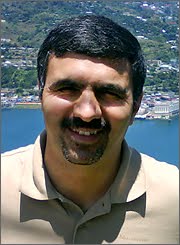Wastes is now burnt in many countries in processes called incineration or combustion. If a little oxygen is provided, the process will be called gasification, producing a dirty syngas (mainly hydrogen and carbon monoxide with many other impurities).
There are a lot of efforts to gasify wastes. However, in many of the gasifiers, the gas is further burnt with more air to produce electricity (and probably heat). In this case, it is not a gasification, but a 2-steps combustion. It makes a question on why we make it in a two-steps and not just a normal combustion as it is commercially running today. On the other hand, if we clean the syngas, it can be converted into many products using e.g. Fischer-Tropsch process. However, it is an expensive process and very difficult to run on a non-homogenious material as e.g. household wastes.
The process of "2-step combustion" via gasification is still developing, which a good news that might lead to commercial processes and more technical developments in the future. The Tees Valley process in the North East of UK is to be the biggest gasifier (if I call 2-step combustion) with a kick-off in 2014. I believe we still need further development for a "real gasification", but let's hope for more good news in the future!!!

There are a lot of efforts to gasify wastes. However, in many of the gasifiers, the gas is further burnt with more air to produce electricity (and probably heat). In this case, it is not a gasification, but a 2-steps combustion. It makes a question on why we make it in a two-steps and not just a normal combustion as it is commercially running today. On the other hand, if we clean the syngas, it can be converted into many products using e.g. Fischer-Tropsch process. However, it is an expensive process and very difficult to run on a non-homogenious material as e.g. household wastes.
The process of "2-step combustion" via gasification is still developing, which a good news that might lead to commercial processes and more technical developments in the future. The Tees Valley process in the North East of UK is to be the biggest gasifier (if I call 2-step combustion) with a kick-off in 2014. I believe we still need further development for a "real gasification", but let's hope for more good news in the future!!!





No comments:
Post a Comment